Grönefeld One Hertz Classic Titanium Reviewed by Tim Mosso
by Tim Mosso
Thank goodness for Tim and Bart Grönefeld. If not for the self-styled “horological brothers” from Oldenzaal in the Netherlands, I’d probably forget the keyboard prompt to generate an umlaut, but I digress. We’re here to appreciate the Grönefeld One Hertz Titanium, and there’s more to it than meets the eye.
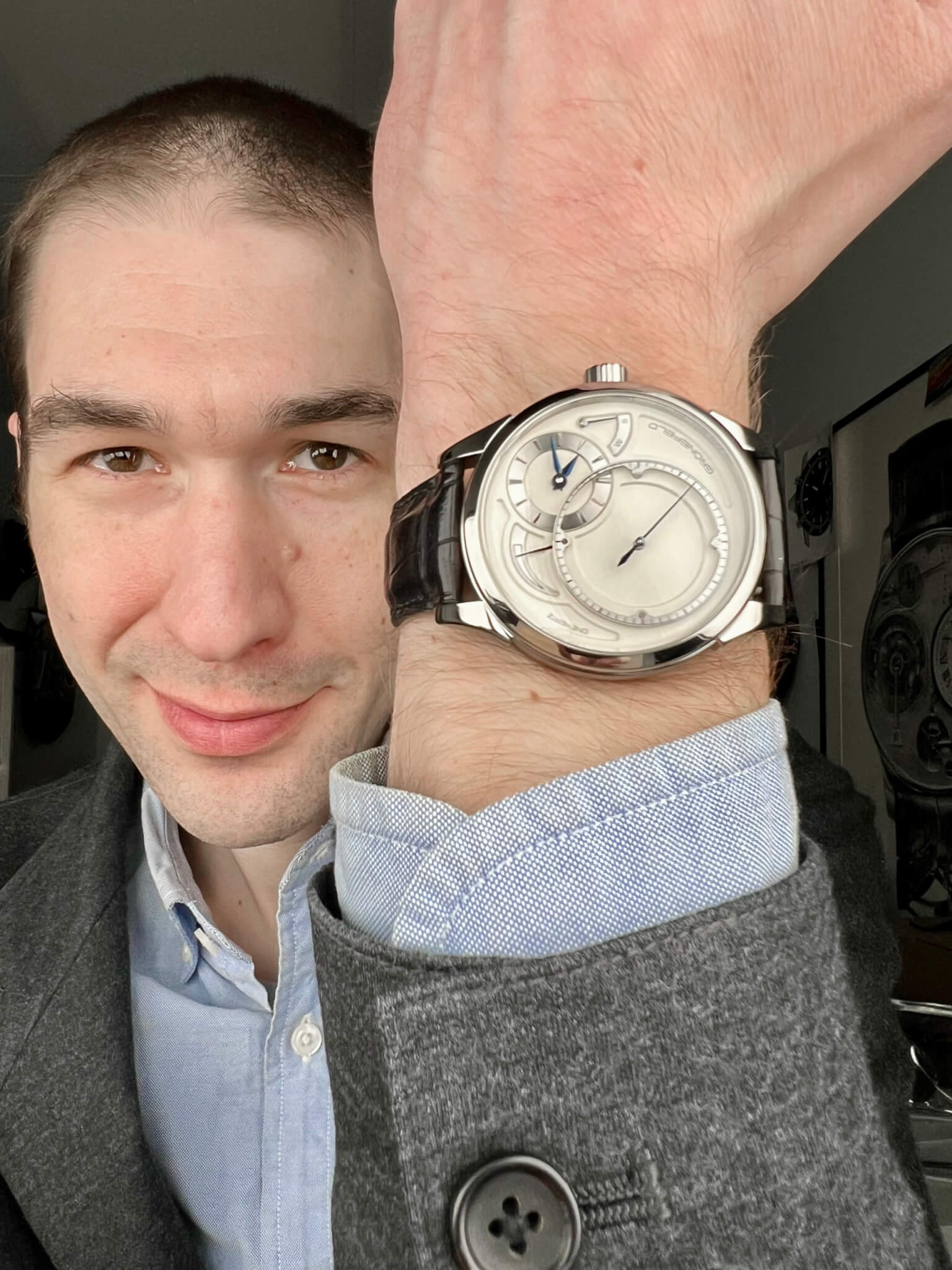
Grönefeld One Hertz Classic Titanium on the wrist
Deadbeat seconds is a subtle complication, and this machine goes about its business with stealth sophistication. It is a watch that reveals its charm by charismatic degrees.
Historically, deadbeat seconds watches were like knuckleballers in baseball or Sith Lords in Star Wars: always a handful but never a legion. That changed in the 21st century as the previously niche mechanism proliferated across a range of models and prices.
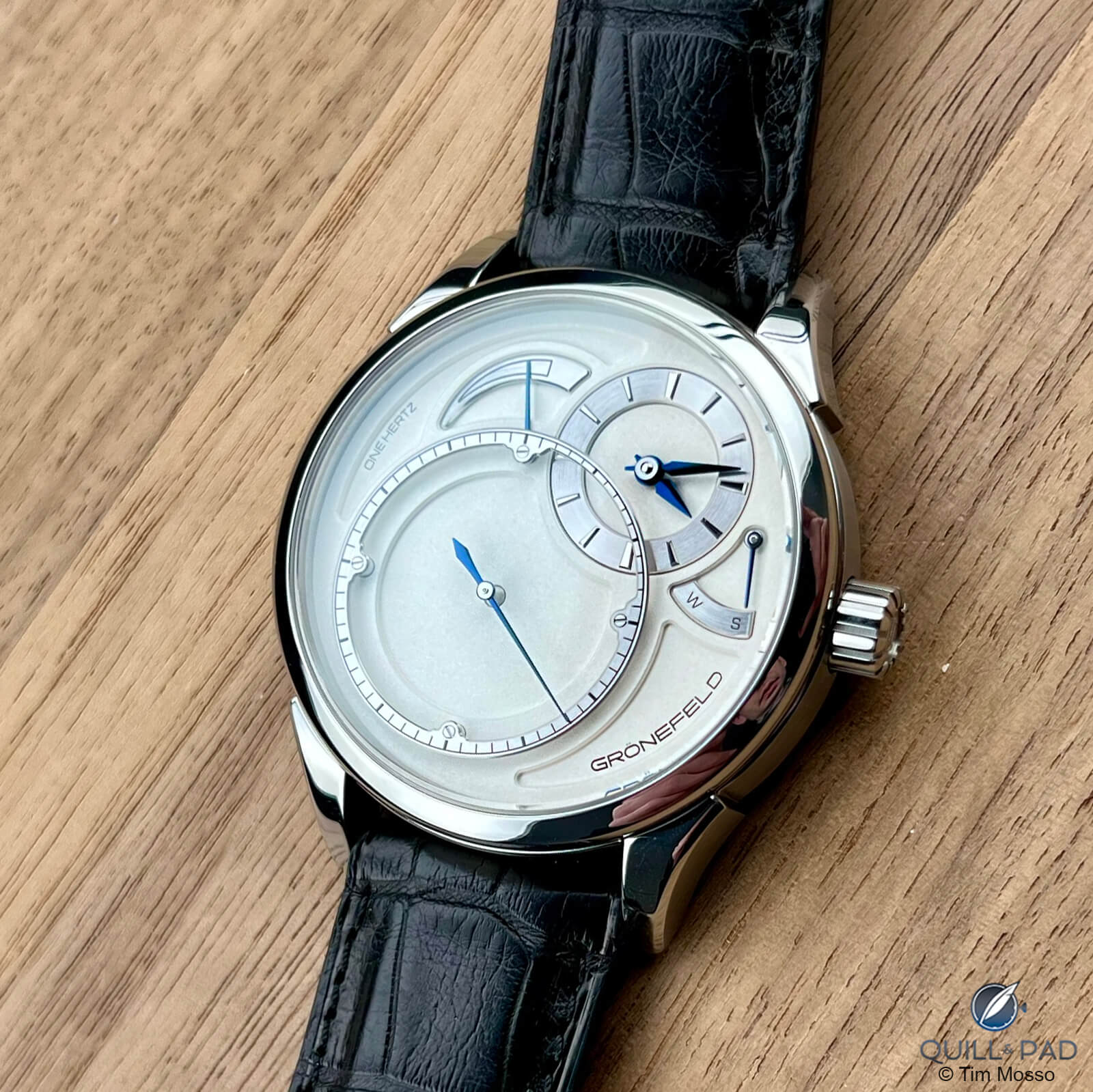
Grönefeld One Hertz Classic Titanium
In a market where a jumping seconds mechanical watch no longer stands out solely on that basis, the Grönefelds’ entry excels because it’s a stunning execution on every other basis.
In other words, collectors buy this watch for its rarity, detail graces, and mechanical ingenuity; the “one hertz” jump becomes an opening act, not the main event.
At least, collectors once bought this watch for those reasons, because it is discontinued. As with most Grönefeld models – including current production – the only way to find a One Hertz is to source one used. Those who do will be pleased, but first, they need to measure their wrists.
Watches are sensual objects, and physical fit is paramount to a degree that becomes a go/no-go for collectors. Prior to launching the 39.5mm “1941” case, Tim and Bart launched their first models in a 43mm+ size that they preferred personally.
Buyers were enamored of Grönefeld quality but pleaded for something smaller. As a result, the One Hertz, retroactively the “1896 One Hertz” to fit the brand’s current case-size nomenclature, doesn’t work on smaller wrists.
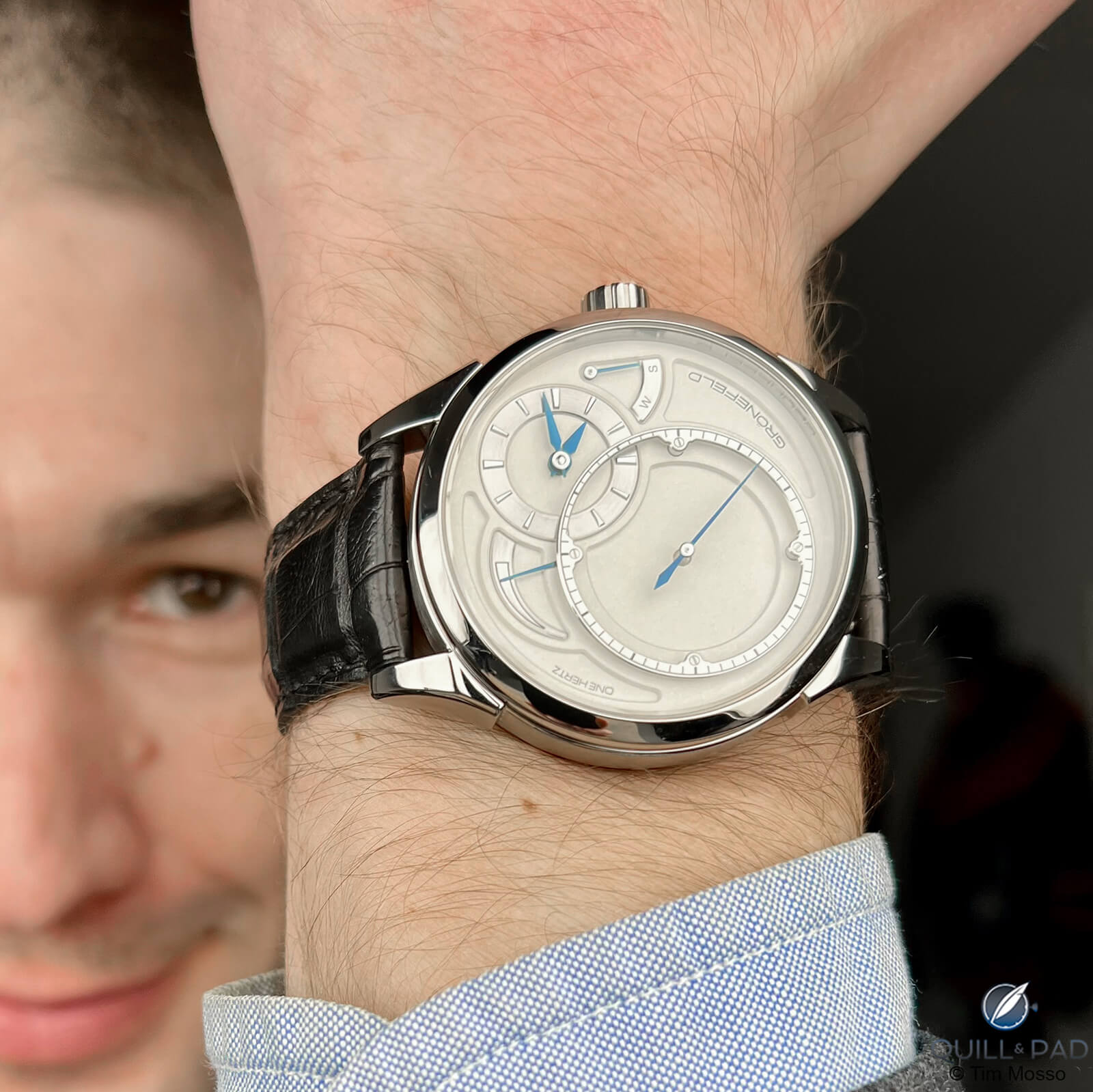
Grönefeld One Hertz Classic Titanium on the author’s wrist
The author’s flat 16cm circumference forearm barely accommodated this machine, and anything smaller would be hopeless.
That said, this watch is the goods. Starting on the dial side, Grönefeld gives pride of place to the dancing seconds hand with the dial’s largest register and that on a series of pillars.
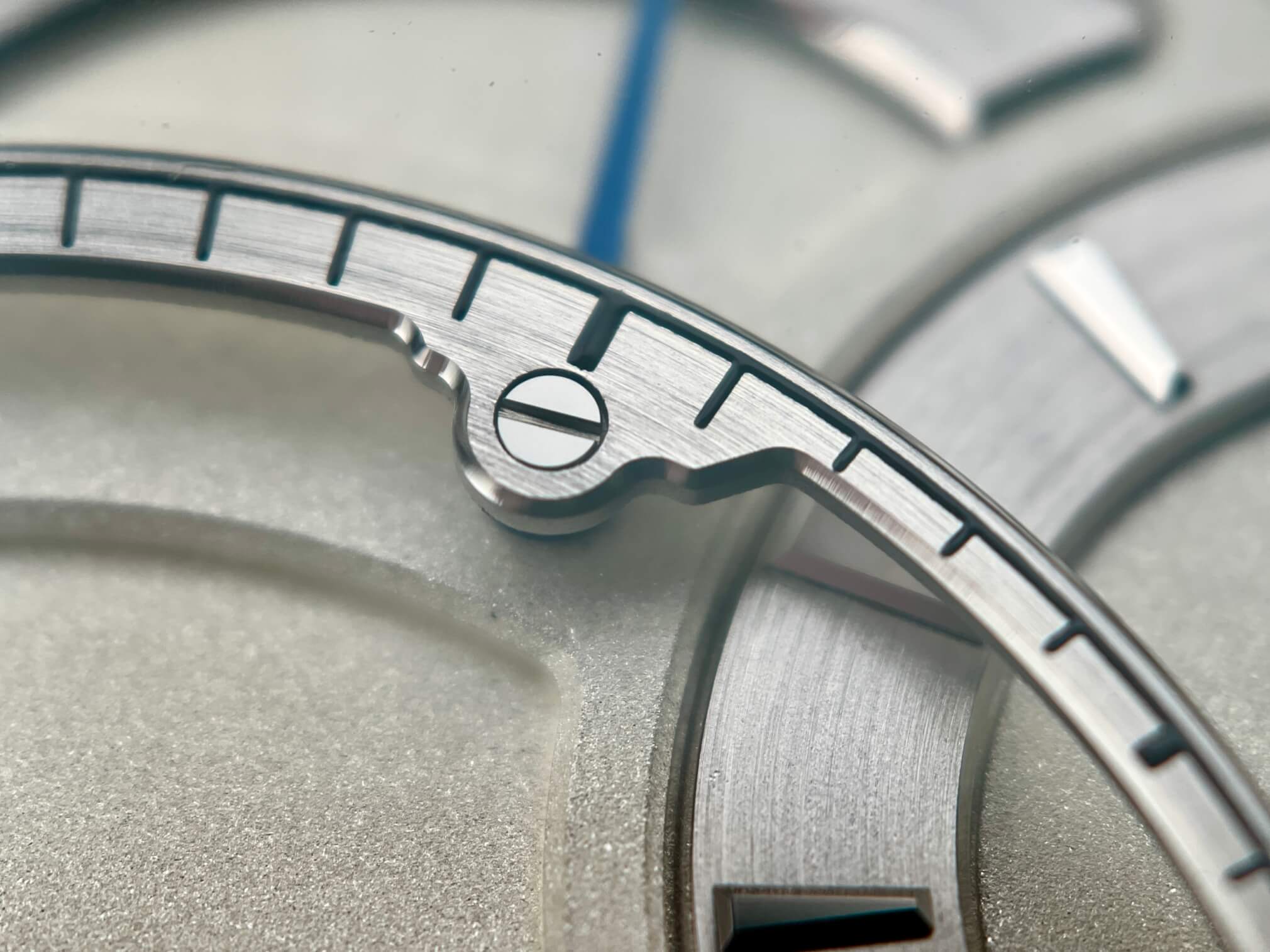
Grönefeld One Hertz Classic elevated seconds ring
The seconds track towers over the subservient hours, minutes, and power reserve indicator. Richard Mille and Audemars Piguet Renaud et Papi fans will appreciate the crown mode indicator at three o’clock.

Crown selector indication: push to wind, push to set the time
This crown is a pushbutton selector that does not pull out in the interests of caliber packaging and avoidance of accidental displacement of the minute hand once set. Deep within the mechanism, a crisp column wheel turns the crown function into a tactile pleasure.
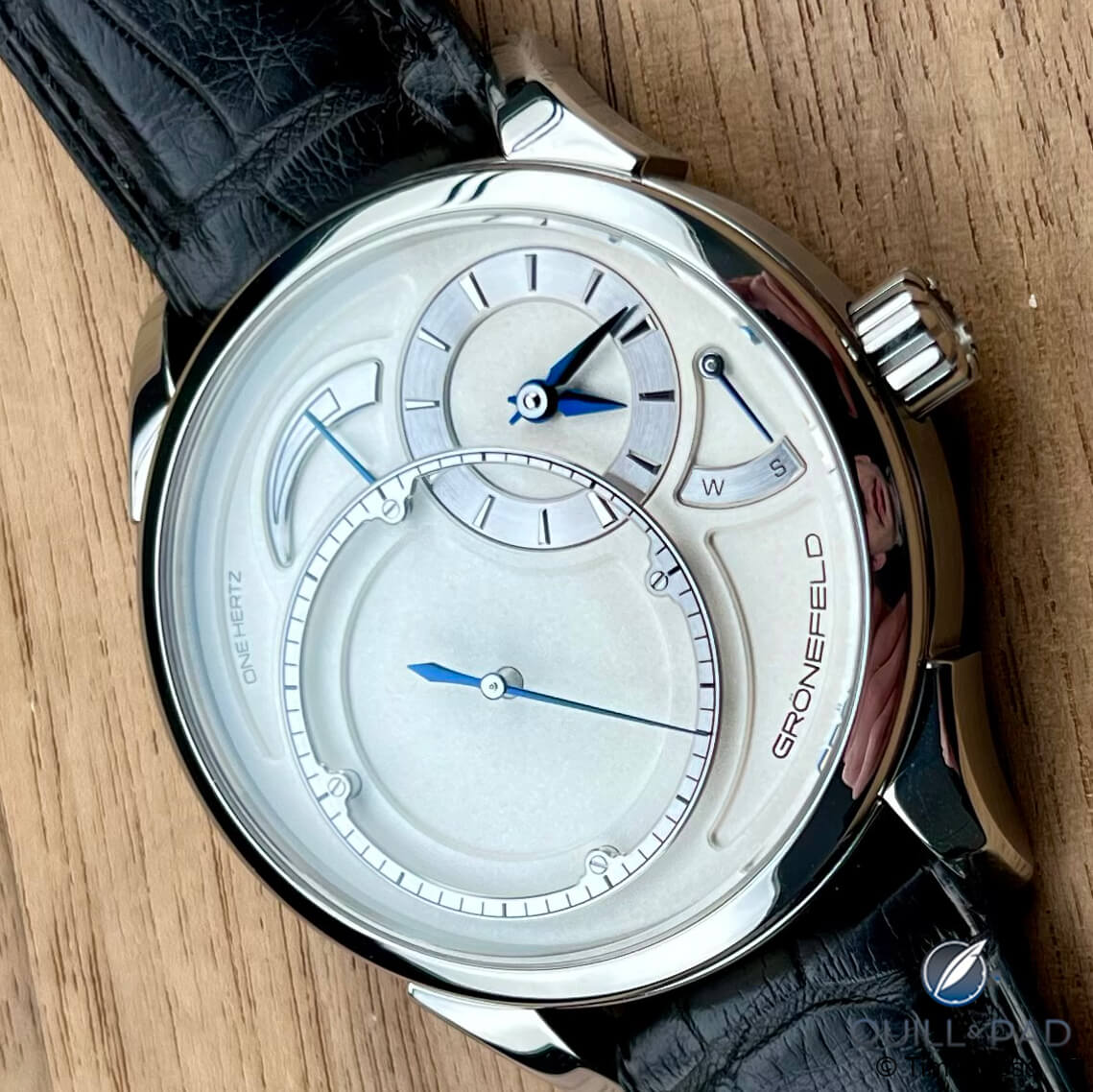
Solid silver dial of the Grönefeld One Hertz Classic Titanium
Grönefeld’s dial is a solid sterling silver construction, but the frosted silver-white fascia disguises the underlying precious metal. Time and function indicators sit atop carefully brushed and polished metal scales; indices are mirrored with razor-like facets; hands are fired blue with a lovely tempered intensity of color.
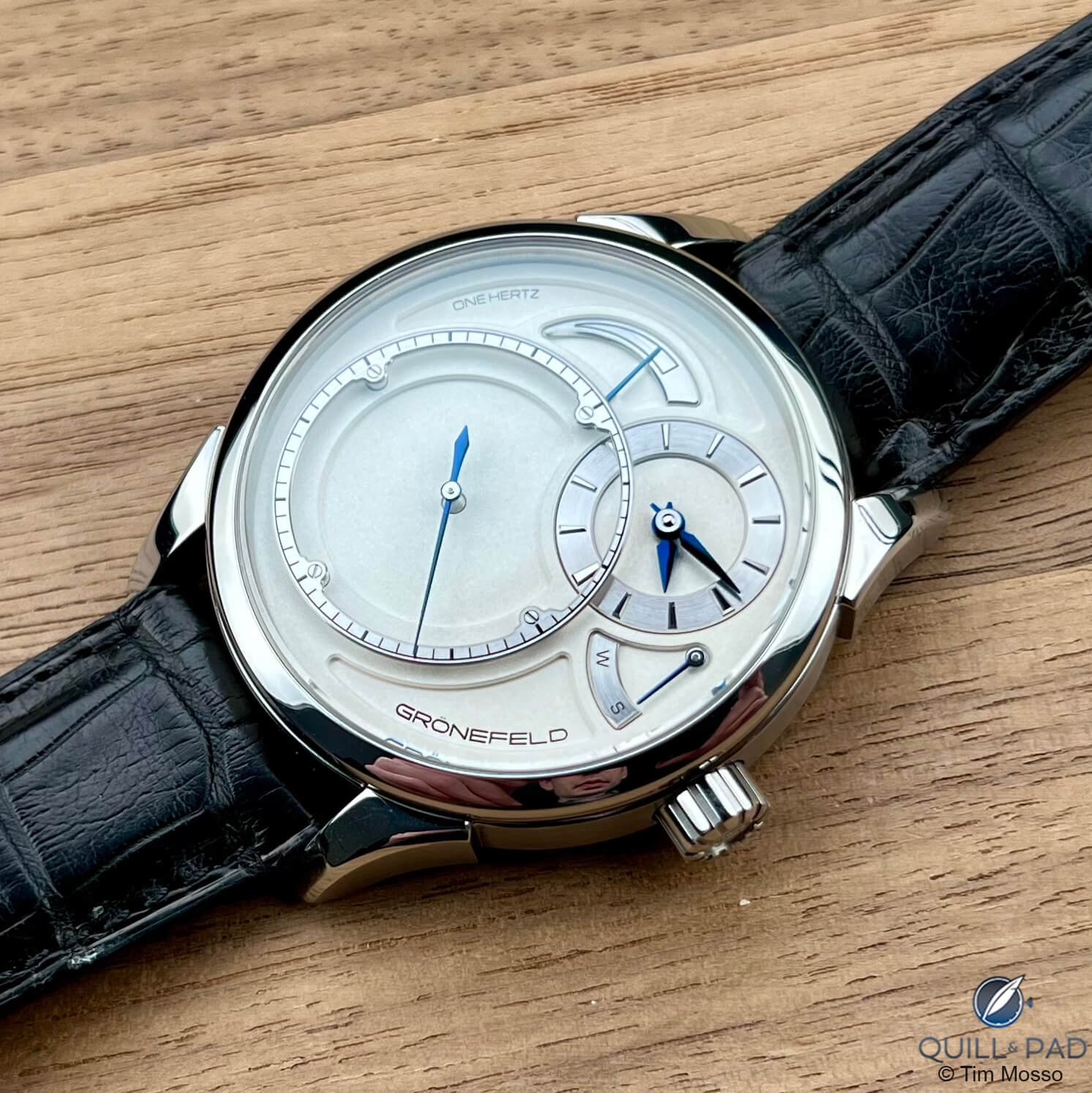
Grönefeld One Hertz Classic Titanium
Just as the seconds scale elevates the eye, several shapely depressions lower the focal plane and articulate the dial’s large barren spaces.
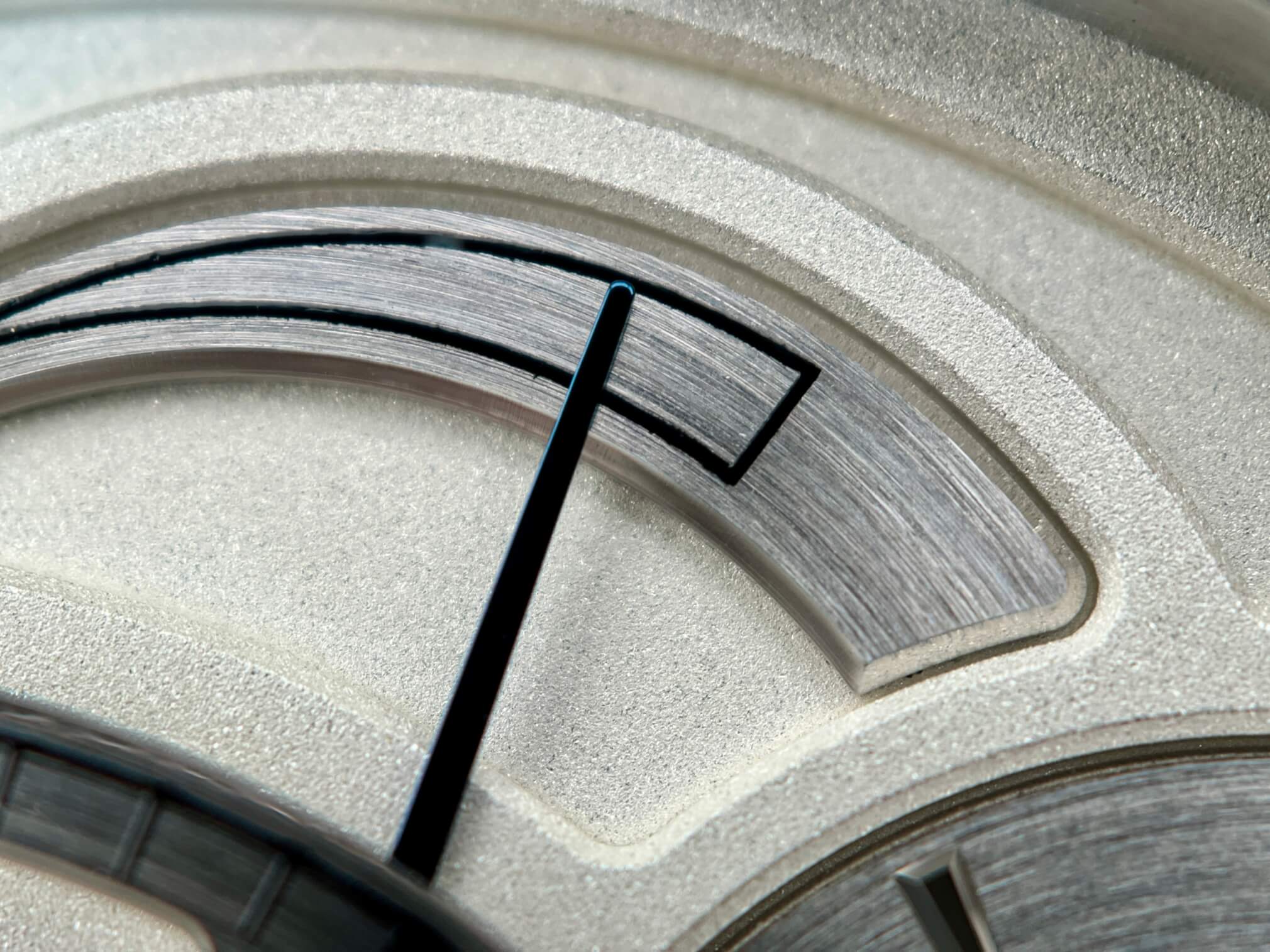
Power reserve indicator of the Grönefeld One Hertz
A galloping (jumping) seconds hand is the highlight of the dial, but the power reserve indicator warrants a mention. First, it has migrated somewhat from earlier versions of the watch that located the display inside of the seconds’ ring. Second, it employs a classical Breguet-style cone-and-follower driven off of a barrel arbor.
In recent years, Ferdinand Berthoud has been the most prominent and exhibitionist adherent of this age-old system, but Tim and Bart have hidden theirs deep within the movement. You can’t see the reserve indicator’s drive device but take pleasure in knowing it’s there.

Grönefeld One Hertz G-02 movement details
Not all deadbeat seconds mechanisms are created equal. Traditional star-and-flirt systems execute the jump effectively, but placing these in the same powertrain as the remaining displays can lead to slow or irregular timekeeping.
The Grönefelds, who dub their setup “dead seconds,” use two independent drivetrains to ensure that the pump-and-dump energy demands of the seconds hand do not interfere with the regularity of the balance wheel, hours, and minutes.
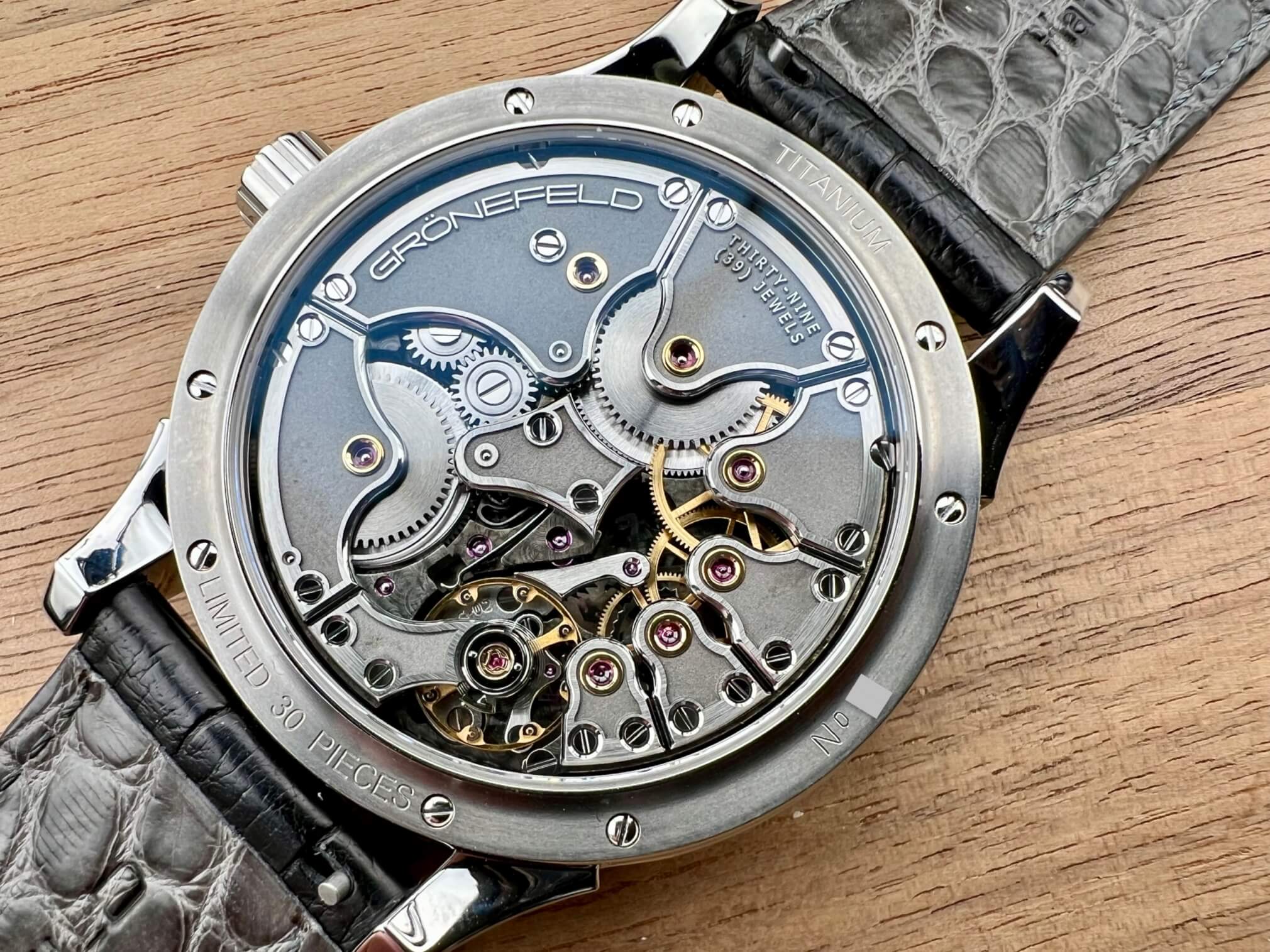
G-02 movement of the Grönefeld One Hertz Classic Titanium
At 34mm, the caliber G-02 is a large movement, and this kind of hand-in-glove match of case to caliber is becoming mandatory in modern hi-luxe watchmaking.
But size is nothing without sophistication, and the intricate decoration of the stainless-steel bridges reveals that Tim and Bart reflected deeply on their formative 1990s experience at Audemars Piguet under Robert Greubel.
Steel is a strange material to choose for bridges, and it’s here primarily because finishing it is a flex.
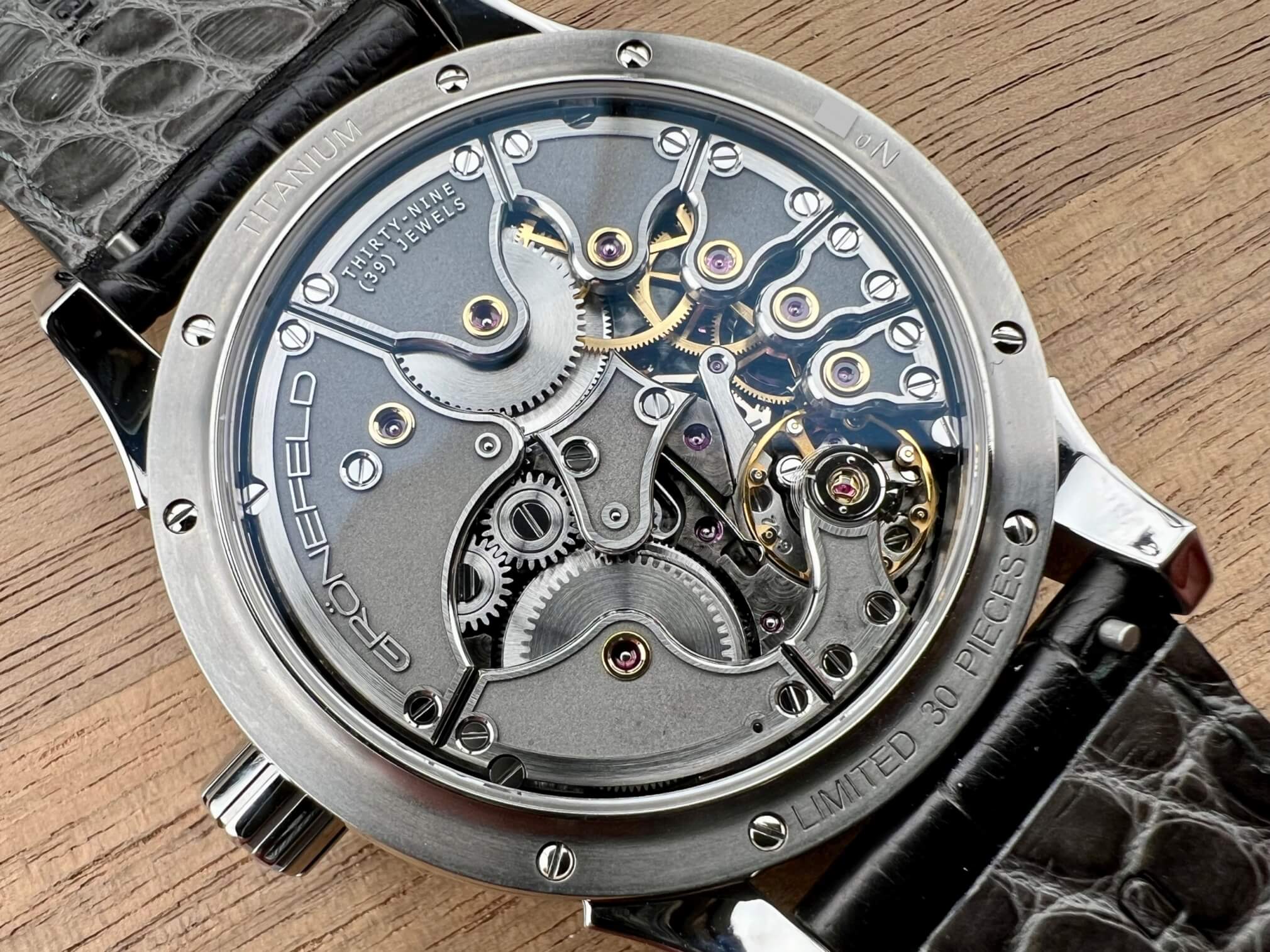
G-02 movement of the Grönefeld One Hertz Classic Titanium
Adding a polished bevel, a satin brushed peripheral relief, and a recessed media blast to each bridge is a triple-flex.
That said, there are rational reasons for using stainless steel. The material resists deformation from harsh handling, it does not corrode, and it does not require delicate plating of rhodium to avoid tarnish.
Specific finishing decisions split the difference between the showmanship of using steel and the practical benefits of reconditioning brushed, blasted, or polished sections that might be marred in service.
Good movements include fine finish. Great movements include elements of architecture – the shapes, proportions, and relative positions of the pieces for aesthetic impact. Caliber G-02 has both.

he bridges of the Grönefeld One Hertz resemble the “bell gable” roofs of traditional Dutch houses
Bridges are profiled to resemble the “bell gable” roofs of traditional Dutch houses.
The drivetrain, barrels, balance cock, keyless works, and dead seconds escapement evenly encircle a center bridge that assists the winding and hacking functions of the crown.
Train pivot jewels are embellished with golden chaton cups whose technical relevance is a relic of the pocket watch era, but whose color and character enliven this anthracite-toned machine. The maillechort (aka German silver) baseplate receives a dark rhodium plating to ensure coherence of color.
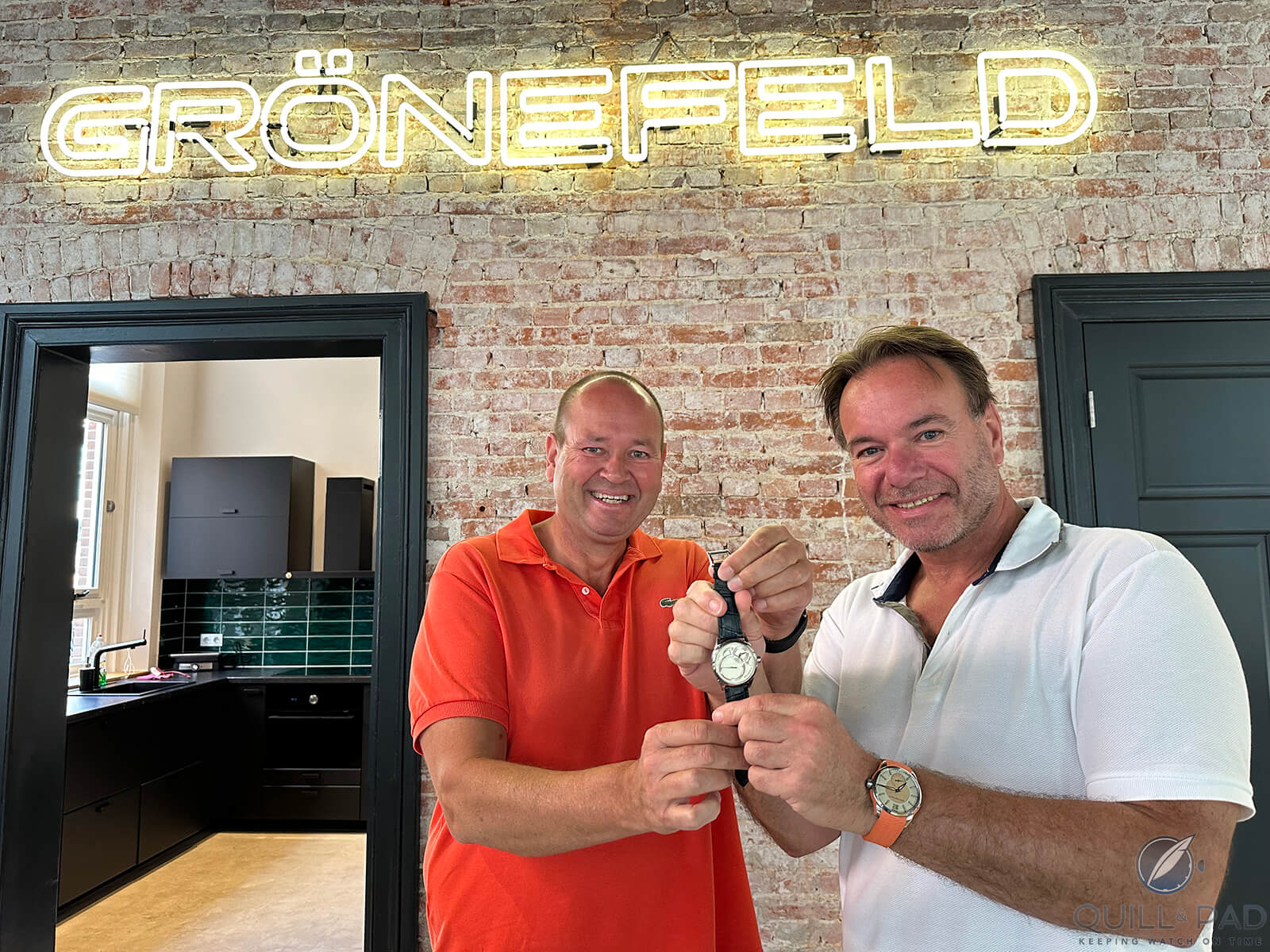
Tim and Bart Grönefeld holding a One Hertz
Small refinements are abundant and meaningful. Exterior highlights include a set of four powerfully stepped, softly beveled, and artfully flared lugs. They add broad-shouldered wrist presence without the stifling conservatism of Lange’s better known but rail-straight step lugs. This crown offers subtle nuance in its blend of polished and media blasted details.
Mechanical refinements include a free-sprung balance to better preserve the elite six-position adjustment from shock-induced timing departures. A carefully curved overcoil hairspring fortifies the precision timing against the vicissitudes of gravity.
It’s 2025, and plenty of used watches on chrono24 offer deadbeat seconds for under $10,000. What was considered exotic in 1956 – or even 1996 – no longer impresses veteran watch collectors.
The appeal of the Grönefeld One Hertz Titanium isn’t its parlor trick but its holistic excellence. It is nearly as compelling while static as in motion.
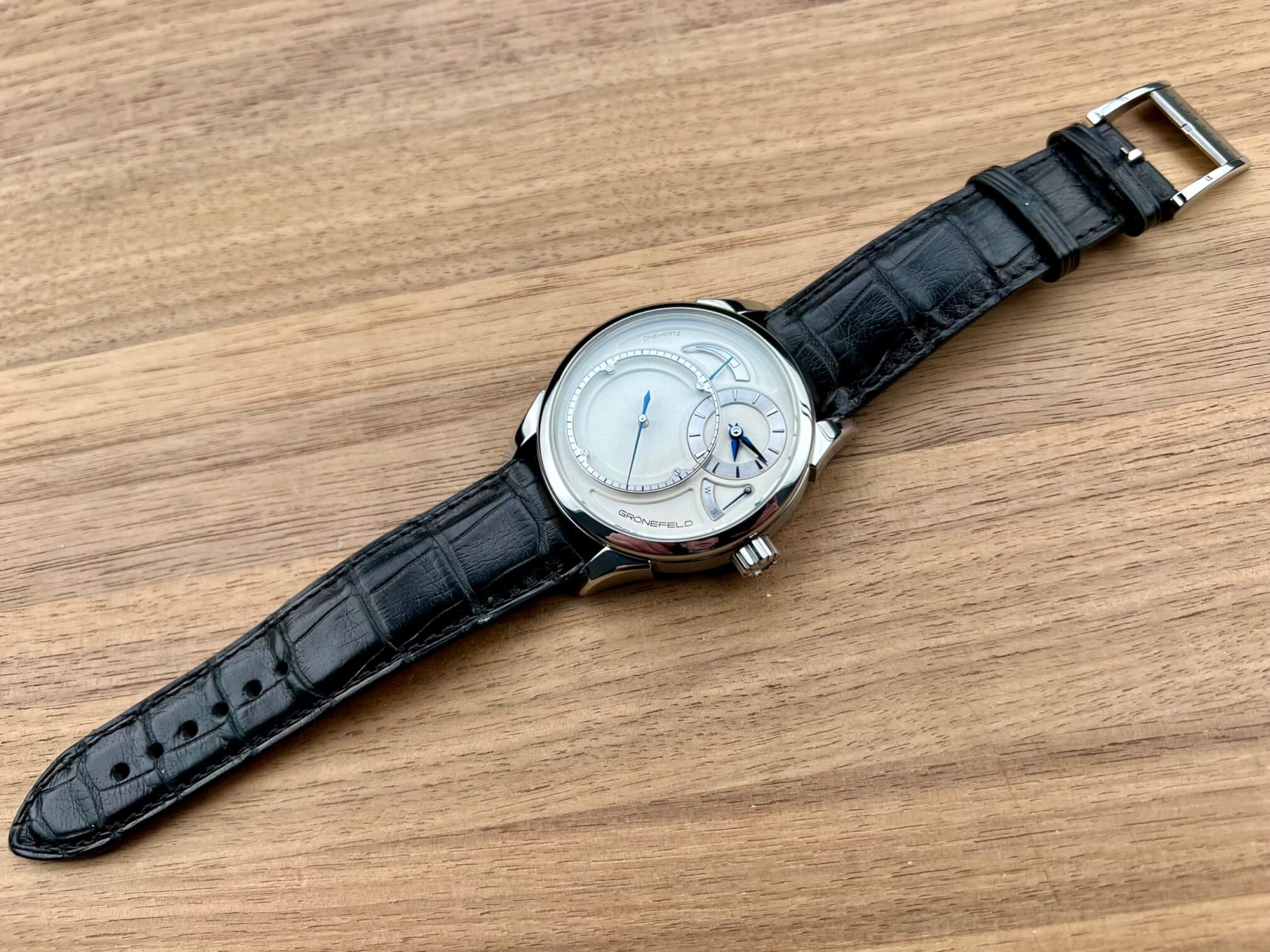
Grönefeld One Hertz Classic Titanium
From design to materials to decoration to engineering, the Grönefeld One Hertz Titanium distinguishes itself as a rare pleasure for the observer and a rare privilege for the owner.
For more information, please visit www.gronefeld.com/downloads/one-hertz-classic/one-hertz-titanium/
Note: at time of publication there is a Grönefeld One Hertz Classic Titanium available at
www.acollectedman.com/collections/recent-arrivals/products/gronefeld-one-hertz-classic-titanium
Quick Facts: Grönefeld One Hertz Classic Titanium
Edition: Launched in 2011 in 30 pieces
Functions: Hours; minutes; deadbeat seconds; multifunction crown; power reserve indicator
Dial: Silver-white color with fine granular texture; raised track for deadbeat seconds display; subdial for hours and minute; power reserve indicator; crown mode indicator; blued steel hands
Case: Grade five titanium; 43mm diameter; 13.3mm thick; 51.7mm lug-to-lug; 22mm between lug horns; stepped lugs; 30 meters of water resistance; push button crown is non-extensible trigger for setting modes
Strap: Rectangular scale grey alligator leather top with small round scale grey alligator leather lining
Clasp: Titanium pin buckle with Grönefeld branding
Movement: G-02; manual wind; 72-hour power reserve; 3Hz beat rate; 39 jewels; free sprung balance; dual mainspring barrels; separate barrels and drivetrains for seconds and hour/minute displays; overcoil hairpspring; hacking seconds; stainless steel bridges with golden chaton jewel cups
2024 Preowned Price: $85,000-$90,000
* Tim Mosso is the media director and watch specialist at The 1916 Company. You can check out their very comprehensive YouTube channel at www.youtube.com/@the1916company.



Leave a Reply
Want to join the discussion?Feel free to contribute!